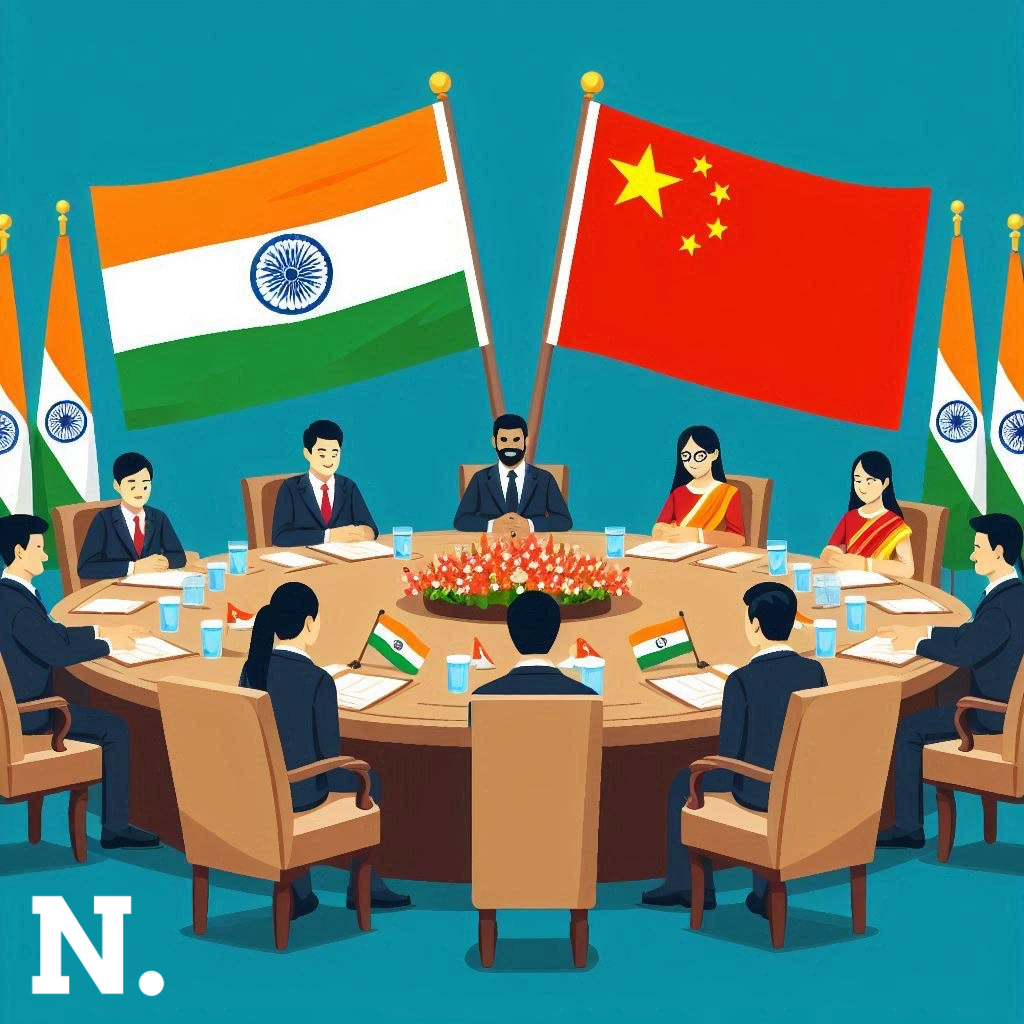The Galwan Valley incident on June 15, 2020, marked a significant escalation in the ongoing border tensions between India and China. The clash resulted in casualties on both sides, with China facing a notable loss of soldiers. This confrontation was not only a military engagement but also a catalyst for broader geopolitical and infrastructural changes in the region.
Immediate Consequences
The immediate aftermath of the clash saw a surge in nationalist sentiment within India, and a renewed focus on strengthening border infrastructure. India accelerated several dormant projects, enhancing road networks, bridges, and military installations along the Line of Actual Control (LAC). This development infuriated China, which viewed these improvements as a threat to its strategic interests in the region.
India’s Strategic Posture
India’s rapid infrastructure development in the border areas post-Galwan was a strategic move to ensure better mobility and supply chain efficiency for its troops. Projects like the construction of the Darbuk-Shyok-Daulat Beg Oldie (DSDBO) road, among others, were prioritised. These projects were aimed at closing the gap in logistics and infrastructure capabilities compared to China.
In addition to infrastructure, India focused on modernizing its military capabilities. This included the acquisition of advanced weaponry, upgrading surveillance and reconnaissance systems, and enhancing the operational readiness of its forces.
Western Deep State Concerns
India’s growing relationships with major powers in the West, the Middle East, East, and Southeast Asia have been a source of concern for both China and certain factions within the Western deep state. These entities viewed India’s rise as a potential threat to their geopolitical agendas. The Galwan clash and subsequent events only heightened these concerns, leading to various attempts to undermine India’s position.
There have been numerous attempts by external actors to influence India’s internal politics. This includes funding of anti-India narratives, support for dissenting voices, and leveraging media platforms to project India in a negative light.
Political Intrigue: Rahul Gandhi’s Foreign Visits
After the 2015 election loss, Indian National Congress (INC) Vice President Rahul Gandhi embarked on a series of foreign trips, raising suspicions about his engagements and the potential influence on his political strategies. His visits to China-friendly countries like Myanmar and Cambodia, and subsequent travels to the UK and the US, were shrouded in secrecy. This secrecy was compounded by his decision to exclude Special Protection Group (SPG) cover on many occasions.
The Indian security agencies raised alarms when Rahul Gandhi met with the Chinese envoy Luo Zhaohui in July 2017, especially during the peak of the India-China Doklam standoff. His meetings with foreign dignitaries during sensitive periods added to the suspicions about his political motives and the potential for foreign influence in Indian politics.
Media Narratives and Propaganda
Following Rahul Gandhi’s visits and speeches abroad, there was a noticeable increase in negative reporting about India in Western media. Publications like Deutsche Welle, TIME Magazine, The Guardian, Financial Times, and others published articles questioning India’s democratic credentials and projecting a dystopian image of its future under the BJP government.
The Western media’s selective outrage is evident in their extensive coverage of India’s internal issues while largely ignoring similar or worse situations in other parts of the world. This includes the treatment of refugees in the Middle East, human rights abuses in China, and indigenous issues in Australia and Canada.
Historical Context : Communal Riots and British Colonialism
The exploitation of India’s communal fault lines by the British colonizers laid the groundwork for future unrest. A long history of communal riots, both during British rule and post-independence under Congress governments, highlighted the deep-seated divisions within Indian society.
Under Congress rule, India witnessed several major communal riots, leading to significant loss of life and property. In contrast, the BJP’s tenure saw fewer such incidents, though the Northeast Delhi riots in 2020 during President Trump’s visit drew considerable international attention.
The Great Game Revisited: Geopolitical Rivalries
The term ‘Great Game’ has been revitalized in the context of the rising competition between India, China, and the West. India’s open and democratic society makes it particularly vulnerable to external influence operations compared to the more insular China.
India’s projected economic growth poses a challenge to both Western and Chinese hegemony. Reports indicate that India could become the world’s third-largest economy by 2027-29 and the leading GDP contributor by 2028, surpassing China. This economic potential makes India a focal point in global geopolitics.
The Invisible Hand: Foreign Influence and Disinformation
The Europe-based Disinfo Lab’s analysis titled ‘The Invisible Hand’ detailed the extent of foreign influence in India’s 2024 general elections. It highlighted the roles of organizations like the Henry Luce Foundation (HLF), George Soros’ Open Society Foundation (OSF), and individuals like Christophe Jaffrelot in shaping anti-India narratives.
The report noted that the propaganda against India peaked in the months leading up to the general elections. Projects funded by HLF and OSF aimed to exploit India’s societal fault lines, including caste and religious divisions, to destabilize the political landscape.
The interplay of geopolitical interests, internal politics, and external influences underscores the complexity of India’s rise on the global stage. As India navigates these challenges, it must remain vigilant against both visible and invisible threats to its sovereignty and stability. The Galwan Valley incident serves as a reminder of the ongoing strategic contest in the region and the need for a resilient and united approach to secure India’s future.
Future Outlook and Strategic Imperatives
To counter external threats and safeguard its interests, India needs to continue strengthening its national security apparatus. This involves not only enhancing military capabilities but also improving intelligence gathering and counter-intelligence operations. Collaborative efforts with friendly nations to share intelligence and best practices will be crucial in this regard.
In the digital age, cybersecurity and information warfare are critical arenas. India must invest in robust cybersecurity infrastructure to protect against hacking, cyber espionage, and other forms of digital attacks. Additionally, combating disinformation and propaganda requires sophisticated tools to monitor, analyze, and counteract malicious narratives spread through social media and other online platforms.
Maintaining a strong and growing economy is essential for India’s strategic ambitions. Policies aimed at boosting industrial growth, innovation, and infrastructure development will help sustain economic momentum. Ensuring a favorable business environment to attract foreign investment, while safeguarding against undue foreign influence, will be a delicate balance.
India’s diplomatic strategy must focus on building and maintaining strong alliances with major global powers and regional players. Active participation in international forums, such as the United Nations, G20, BRICS, and regional organizations like ASEAN, will help India assert its influence and protect its interests.
Internal Stability
Ensuring internal stability is paramount for India’s growth and security. This includes addressing socio-economic disparities, fostering social cohesion, and upholding democratic principles. Effective governance and responsive institutions will help mitigate internal conflicts and prevent external actors from exploiting domestic issues.
Investing in education and technological advancement is key to maintaining India’s competitive edge. Promoting STEM (Science, Technology, Engineering, and Mathematics) education, fostering innovation, and supporting research and development will drive future economic growth and technological leadership.
China’s Strategic Moves
China will continue to pose a strategic challenge to India. Beijing’s Belt and Road Initiative (BRI) and its increasing influence in South Asia, Africa, and beyond require India to develop counter-strategies, including strengthening regional partnerships and offering viable alternatives to Chinese investments.
The West’s approach to India will likely be a mix of cooperation and competition. While major Western powers recognize India’s strategic importance in balancing China, they will also continue to pursue their interests. Navigating these complex relationships requires astute diplomacy and strategic foresight.
South Asia’s geopolitical dynamics will remain fluid. India must engage constructively with its neighbors, including Pakistan, Nepal, Sri Lanka, and Bangladesh, to foster regional stability and cooperation. Addressing contentious issues, such as border disputes and water sharing, through dialogue and diplomacy will be crucial.
Long-term Vision : India-China Relations
As India rises, it must advocate for a multipolar world order where multiple powers coexist and collaborate on global challenges. Promoting principles of equity, justice, and mutual respect in international relations will enhance India’s standing as a responsible global player.
Pursuing sustainable development goals will ensure long-term prosperity and stability. India must balance economic growth with environmental sustainability, focusing on clean energy, conservation, and climate resilience.
Leveraging India’s rich cultural heritage can enhance its soft power. Promoting cultural exchanges, tourism, and global awareness of Indian traditions and values can build goodwill and strengthen international relations.
Geopolitical rivalries, domestic politics, and external influences interact in complex ways. This emphasises the necessity of adopting a comprehensive and strategic approach to national security, economic growth, and international diplomacy. India can secure its place as a leading nation in the 21st century. By strengthening its internal resilience and forging strong and equitable partnerships. Certainly, India can contribute to a stable and prosperous global order.





